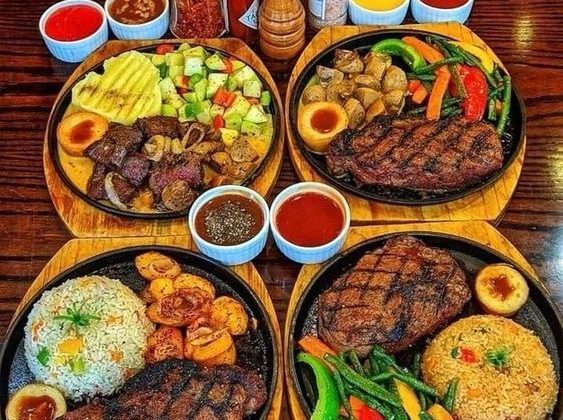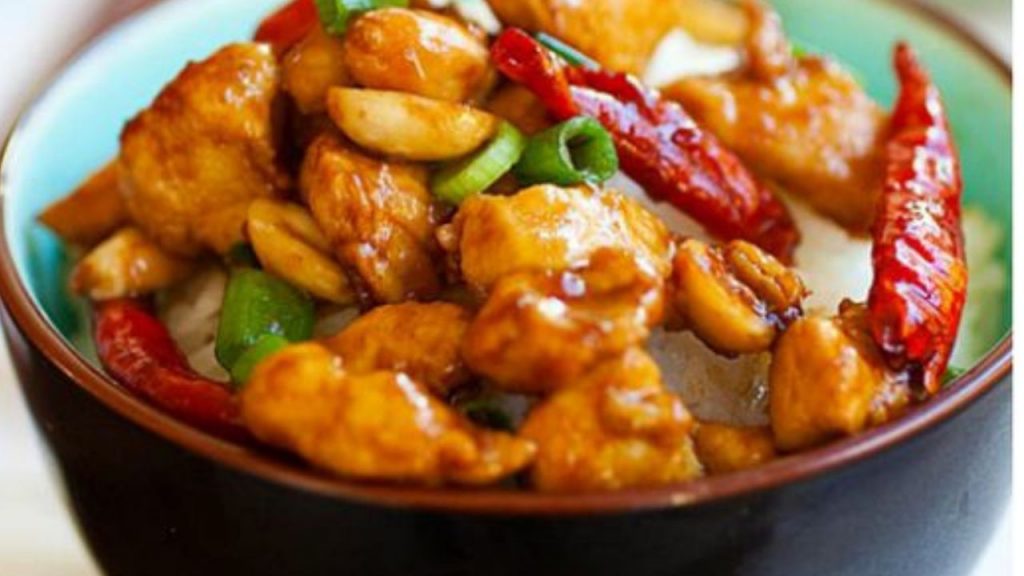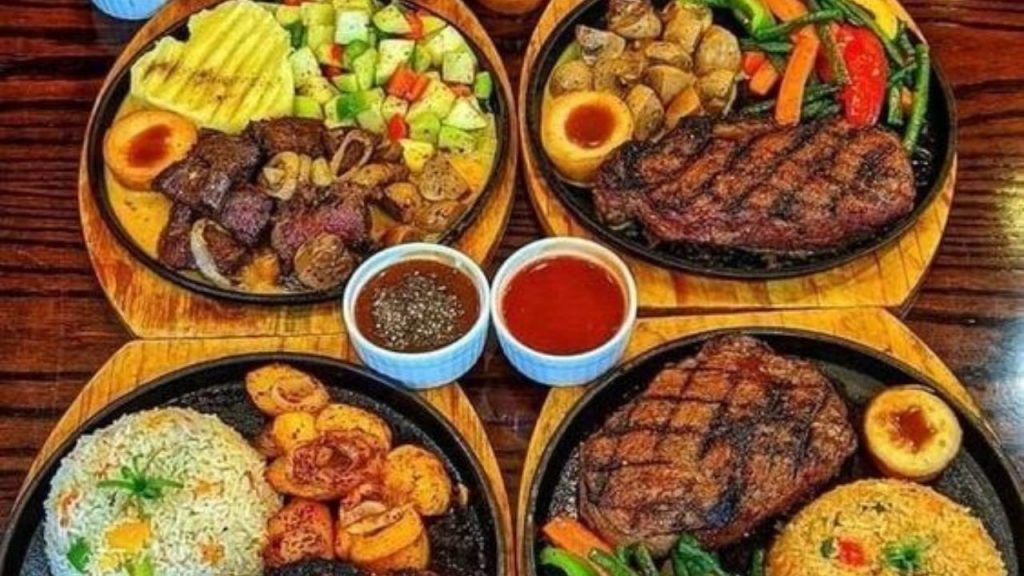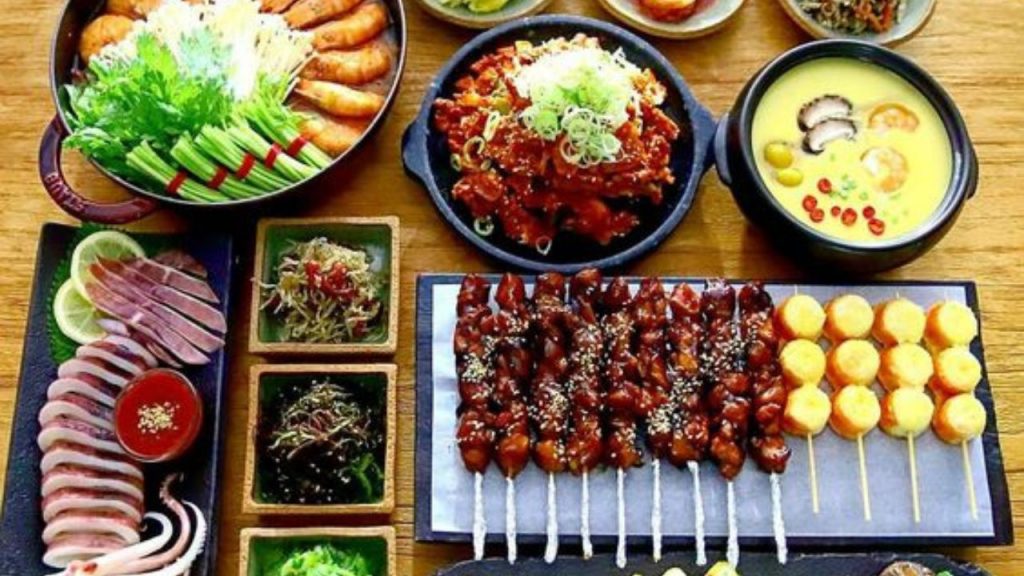
There are many different types of food from all over the world. Some people may prefer to eat Korean food, while others may prefer Japanese food. Both Korean and Japanese food have their own unique flavors and styles. So, which type of food should you focus on?

When it comes to Asian cuisine, there are a few heavy hitters that come to mind: Chinese, Japanese, and Korean. All three have their own unique flavors and styles, but which one should be your priority?
Korean food is known for its bold flavors and spicy dishes. If you’re looking for a real explosion of taste in your mouth, then Korean food is the way to go. From kimchi to bibimbap, there’s no shortage of flavor in Korean cuisine.

Japanese food, on the other hand, is all about simplicity. Dishes are typically light and flavorful, with a focus on fresh ingredients. This makes Japanese food perfect if you’re looking for something healthy and satisfying.
So, which is your priority? If you want big flavors and lots of spice, go with Korean food.
Common Ingredients In Korean Foods
Korean cuisine is known for using fermented vegetables, such as kimchi, and soybean paste, such as gochujang. These ingredients are used to add flavor and depth to dishes. Other common ingredients in Korean cuisine include rice, beef, pork, chicken, seafood, and vegetables. Many of these ingredients are also used in other East Asian cuisines.
Korean cuisine is known for its use of unique ingredients and flavors. However, there are some common ingredients that can be found in many Korean dishes.
These include soy sauce, garlic, ginger, and gochujang (a chili paste). Soy sauce is used as a seasoning in many different recipes. It adds a salty flavor and helps to bring out the other flavors in the dish.
Garlic is also a common ingredient in Korean cooking. It is used to add flavor and depth to dishes, as well as to provide some health benefits.
Ginger is another ingredient that is often used in Korean cuisine. It has a spicy flavor that can add complexity to dishes. Lastly, gochujang is a chili paste that is made from red chili peppers, rice flour, and various seasonings. It is used to add heat and spice to dishes.
Characteristic Flavor Of Korean Foods
The characteristic flavor of Korean foods can be difficult to describe for those who have never tasted them. The best way to put it is that the flavors are intense and unique.
A lot of Korean dishes incorporate soy sauce, sesame oil, garlic, and chili pepper into their recipes, which gives them all their distinctive flavor.
These ingredients are not used in small quantities either; they are typically used in large amounts, which makes the flavors even more potent. If you’re ever lucky enough to try a Korean dish, be prepared for an explosion of flavor in your mouth.
Let’s Talk About Traditional Japanese Foods
What comes to mind when you think of Japanese food? Sushi, right? While sushi is certainly a popular dish, it’s far from the only traditional Japanese food. In fact, there are dozens of different foods that are considered “traditional” in Japan. Some of these include:
Ramen: This popular noodle dish was originally created in Japan. It can be made with chicken, pork, or seafood broth and is often served with vegetables or meat toppings.
Tempura: This dish is made by coating seafood or vegetables in a light batter and then frying them. It’s a popular choice for both lunch and dinner.
Sukiyaki: This dish is made by cooking beef, tofu, and vegetables in a soy sauce-based broth. It’s usually served with rice or noodles.
Other Influences On Japanese Cuisine
One of the most striking features of Japanese cuisine is its apparent simplicity. However, as with all cuisines, there is more to Japanese cooking than first meets the eye. The most influential factors in Japanese cuisine are geography, history, and culture.
Geography has played a huge role in shaping Japanese cuisine. Japan is a long and narrow country, with mountains and forests in the north and east and a large Pacific Ocean coastline.
This geography has resulted in regional variations in climate, food production, and eating habits. For example, seafood is popular on the coast, while inland, people prefer pork and beef.
Japan’s long history has also had a significant impact on its cuisine. Over the centuries, Japan has been ruled by many different empires, each of which has left its mark on Japanese cooking.
Chinese and Korean influences are particularly evident in modern-day Japanese cuisine.
Differences Between Korean Food And Japanese Food
There are many cultural differences between South Korea and Japan. The way that people think, the way that they communicate, and of course, the food are all different.
Korean food is spicier than Japanese food. Kimchi is a popular dish in Korea that is made with fermented cabbage and spices. It is usually served as a side dish or appetizer. Another popular Korean dish is bibimbap.
This dish is made with vegetables, rice, and protein such as beef or chicken. Japanese food is typically less spicy than Korean food. One popular Japanese dish is sushi. Sushi is made with seafood and rice and can be served either raw or cooked.
| Comparison Features | Korean food | Japanese food |
|---|---|---|
| Preparation | More complicated with many marinated steps | More accessible |
| Cooking method | More complex with many condiments and spicesSpend a lot of time making dishes | Faster and more accessible |
| Taste | Stronger, richer, and spicier | Having subtle and delicate flavor and keeping the natural taste of the components |
| Side dishes | Consume more side dishes | Fewer accompaniments |
| Eating Etiquette | Having many rules and rituals while eating | More comfortable during the meals |
| Heath | Sometimes, they are not suitable for your health | They are healthier than Korean food |
| Price and ingredients’ quality | Lower price component’s quality is not better than Japanese ones. | More expensive more premium ingredients |

What Are The Differences In The Cooking Methods?
As a basis for researching oriental cuisine, during which I discovered that cooking has many things going for it. Unlike oriental cuisine, cooking Korean food appears to be advanced and challenging, as it is quite necessary to prepare yourself with many seasonings, spicy sauces, and pickled veggies.
For delicious Korean food, you must spend more time in the kitchen, and using basic ingredients isn’t going to be enough to make scrumptious food. So, if you want to show off your cooking abilities, let’s choose Korean food as it requires extensive preparation.
Cooking quality Japanese dishes will not be as messed up because it is simpler to release the finished heat on the stove and direct the heat to raw items and create the completed dish in the skillet or pot.
It’s straightforward and easy, you just need to cut the ingredients and prepare them in a pan, but for the prized delicacies of elegant restaurants, meticulousness and complicated techniques are required.
Besides utilizing raw ingredients, the Japanese delicacy is generally roasted (nariru) or performed (maru) into delicate parts. Additionally, simmering (musu) and frying (ageru) are also typical varieties of preparation of Japanese dishes.
Also, creating Japanese food saves you plenty of time; as a result their ease of preparation cuts the preparation time down considerably.
Let’s Compare the taste of Korean and Japanese food
There are many similarities and differences between the food of Korea and Japan. Both countries have a strong culinary tradition, and their food is considered some of the best in the world. However, there are also some significant differences between the two cuisines.
One of the biggest differences is in the flavors used in Korean and Japanese food. Japanese food typically uses a lot of soy sauce, which gives it a salty flavor. Korean
food, on the other hand, uses a lot of chili paste, which gives it a spicy flavor. This difference in flavor can be seen in some popular dishes from each country.
For example, kimchi is a popular Korean dish made from fermented cabbage mixed with chili paste, while sushi is a popular Japanese dish made from rice and fish rolled up in seaweed. Another big difference between Korean and Japanese food is in the way they are cooked.
Suppose you have tried Korean food, and you have fallen in love with its strong and rich taste. The blend of spices and sauces creates this intense taste. Soy sauce and oyster sauce are two pretty common elements in Korean dishes to give them an exquisite savory taste.
In contrast, Japanese food brings a sense of lightness and is more comfortable. The use of fewer spices makes the dish’s flavor subtle and delicate. Moreover, the aroma of the food is not too strong. Japanese food still retains the natural taste of the ingredients.
Differences In Accompaniments between Korean and Japanese food.
When it comes to traditional Korean cuisine, there are usually three main accompaniments: Kimchi, Bulgogi and Banchan. Banchan is a term used for small dishes of food served alongside rice and other main dishes.
It is a common feature in Korean cuisine, and there are many different types of banchan, such as kimchi, jeon (pancake), namul (seasoned vegetable), and bindaetteok (mung bean pancake).
Japanese food also has a variety of accompaniments, but the most popular one is sushi. Sushi is a dish made of vinegared rice combined with various ingredients such as seafood, vegetables, or egg.
Other popular accompaniments in Japanese cuisine include ramen noodles, yakitori (chicken skewers), tempura, and onigiri (rice balls).
between Korean and Japanese food, which one Is Healthier?
There are many similarities and differences between Korean and Japanese food. Some people might say that Japanese food is healthier because it has less oil and salt.
However, others might argue that Korean food is healthier because it includes more vegetables and fish. Ultimately, the decision of which cuisine is healthier depends on the individual’s preferences and dietary restrictions.
Korean food is known for its spicy flavors, while Japanese food is typically more mild. Both cuisines include a variety of noodles, rice dishes, and seafood.
The biggest difference between the two is the use of sauces. Korean cuisine uses a lot of soy sauce, while Japanese cuisine relies heavily on miso paste, which is made from fermented soybeans. This gives Japanese food a slightly sweeter flavor than Korean food.
Some people believe that Korean food is healthier because it includes more vegetables and fish.
Korean and Japanese Price And Quality Of Ingredients
The price and quality of ingredients can vary greatly depending on the country of origin. In general, Korean and Japanese ingredients are thought to be high-quality and expensive.
This is especially true for seafood, which is considered a delicacy in both countries. There are some exceptions, of course. For example, while Japanese Wagyu beef is considered to be some of the best in the world, Korean bulgogi beef is also highly prized.
And while Japanese soy sauce is considered the best in the world, Korean soy sauce is gaining a reputation for being equally good – if not better.
So what’s the bottom line? In general, Korean and Japanese ingredients are thought to be high-quality and expensive. But there are definitely exceptions, so it’s always worth checking out both countries for the best prices and quality.
The Similarities Between Korean Food And Japanese Food
Aside from the differences, there are many similarities between Korean and Japanese food. It is time to blow your mind with the characteristic features they have in common.
Different from regular canned food like Western and American cuisine, 2 East Asian countries prioritize fresh components to bring the best experience for daily meals. People love to buy meat, veggies, and seafood from local markets and cook instantly.
Korean food and Japanese food are served in the same way. You will easily encounter a lot of bowls and plates on the dining table of people in these 2 countries because they often serve small portions.
A striking similarity between the food of the 2 countries is the regular use of rice, pickles, and soy sauce in daily meals. They are staple foods of these countries. People love making steamed rice and mixing it with savory main courses.
Furthermore, rice is an essential ingredient in processing Sushi, noodles, and Rice Rolls. People add soy sauce to the dishes to enhance their flavor. Not only that, it can act as a dipping sauce.
Koreans and Japanese have a huge passion for noodles. Ramen, Udon, or Soba are widely loved noodles in the country of cherry blossoms.
Both Korean food and Japanese food are famous in many regions worldwide. And, young people in other Asian countries have a great affection for the dishes of these 2 nations. Even better, their popularity also spread to Western countries.
Some Famous Korean Food And Japanese Food
In case you would like to bring new experiences to your guests, you can go to the kitchen to make excellent and famous foods of Japanese and Korean cuisine right now.
Explore The Eating Etiquette In Japanese And Korean Cuisine
Cuisine from different parts of the world often has its own distinct set of rules and etiquette that go along with them. In Japanese and Korean cuisine, there are a few things to keep in mind when it comes to eating. Here are some tips on how to properly enjoy a meal in these countries.
When eating sushi or other delicacies from the sea, it is customary to use your fingers. Pick up the food with your chopsticks and dip it into soy sauce before popping it into your mouth. You can also use your chopsticks to move food around your plate, but do not spear anything with them.
In Korea, make sure you wait until everyone has been served before starting to eat. It is also considered polite to leave a small amount of food on your plate when you are finished. This shows that you have enjoyed your meal and that you are not greedy.
Iconic And Amazing Food Of Korean Cuisine
Korean cuisine is one of the most unique and flavorful in the world. The cuisine is based on rice, noodles, vegetables, and meats. A variety of spices are used to flavor the dishes, which makes for a delicious and memorable dining experience. Some of the iconic dishes of Korean cuisine include bibimbap, bulgogi, and kimchi.
1. Bibim
Bibimbap is a dish made of rice, vegetables, and meat. The ingredients are typically served in a bowl and then mixed together before eating.
Bulgogi is a type of marinated beef that is grilled or pan-fried. It is often served with rice and kimchi. Kimchi is a spicy side dish made from fermented cabbage. It is popular in Korea and can be found in most restaurants serving Korean food.
2. Bulgogi – Korean Barbecued Beef
Bulgogi is a Korean dish made from beef or pork that is marinated in a soy sauce-based sauce and then grilled. The word “bulgogi” means “fire meat.” It is considered a national dish of South Korea.
Bulgogi can be made with either thin slices of beef or pork or thicker chunks of meat. The meat is typically marinated for several hours in a mixture of soy sauce, sugar, sesame oil, garlic, and pepper. Sometimes ginger and green onions are also added to the marinade.
The meat is then grilled over hot coals for a few minutes until cooked through. It can be served either on its own or wrapped in a tortilla or lettuce leaf with some rice and pickled vegetables.
3. Kimchi Jjigae – Kimchi Stew
Kimchi Jjigae is a traditional Korean dish made with Kimchi and pork. The ingredients are simple, but the end result is a complex and flavorful stew.
The Kimchi gives the stew a spicy flavor, while the pork provides richness and depth of flavor. This dish can be prepared in a variety of ways, so feel free to experiment with different ingredients.
4. Gimbap
Gimbap (김밥) is a Korean dish made from steamed rice, vegetables, and usually fish or meat wrapped in seaweed. The name “gimbap” is derived from the Korean word “kim” (김), meaning “seaweed,” and the word “bap” (밥), meaning “rice.” It is often eaten as a light meal or snack.
Gimbap is usually rolled with roasted sesame oil, soy sauce, and sugar to give it a sweet and savory flavor. Common vegetables used in gimbap include carrots, spinach, cucumber, and pickled radish. Some variations also include egg and spam.
Gimbap can be found at most convenience stores in South Korea, as well as restaurants specializing in Korean cuisine.
5. Naengmyeon
Naengmyeon is a popular Korean dish made from buckwheat noodles and served cold with a variety of toppings. The dish is believed to have originated in the northern region of the country and is now enjoyed all over Korea.
Naengmyeon can be made with beef, pork, chicken, or seafood broth and is often served with kimchi, cucumbers, and hard-boiled eggs.
In recent years, the popularity of naengmyeon has spread beyond Korea, and it can now be found in restaurants around the world.
There are so many delicious Japanese foods to try, but here are some of the most popular ones you have to try! Sushi is a must-try for any sushi lover. It’s made with rice, seaweed, and various seafood toppings.
Another popular dish is ramen. It’s a noodle soup with different toppings such as pork, eggs, and vegetables. Takoyaki is also a popular dish. It’s made with octopus dough balls that are grilled and then topped with sauce, mayo, and seaweed flakes.
Finally, don’t forget about Japan’s famous Wagyu beef! It’s one of the most expensive types of beef in the world, but it’s definitely worth trying if you can afford it.
When it comes to Japanese food, there are so many dishes to choose from that it can be hard to know where to start. If you’re looking for some of the most popular Japanese food items, though, here are eight dishes you have to try.
Sushi is one of the most well-known and popular Japanese dishes in the world. Sushi is made up of rice and various toppings, such as seafood or vegetables.
Ramen is another popular dish that originates from Japan. Ramen is a noodle soup that is typically made with pork or chicken broth and served with toppings like seaweed, green onions, and boiled eggs.
Tempura is a dish made of battered and deep-fried seafood or vegetables. Tempura is a light and tasty dish that can be enjoyed as an appetizer or main course.
Takoyaki is also a popular dish. It’s made with octopus dough balls that are grilled and then topped with sauce, mayo, and seaweed flakes
Conclusion
Korean food and Japanese food are both unique and delicious in their own ways. But what sets them apart? And which should you prioritize if you can only choose one?
Korean food is typically heavier and more savory than Japanese food. Korean dishes often feature meats like beef or pork, along with lots of vegetables and spices. Kimchi, a fermented cabbage dish, is a popular Korean side dish.
Japanese food, on the other hand, is lighter and more delicate. sushi, sashimi, and tempura are all popular Japanese dishes. rice is also a staple in Japanese cuisine. Wasabi, a spicy horseradish paste, is often served with sushi.
So which cuisine should you choose? It all depends on your personal preferences. If you like bold flavors and hearty dishes, then Korean food is the way to go.

Leave a Reply
You must be logged in to post a comment.